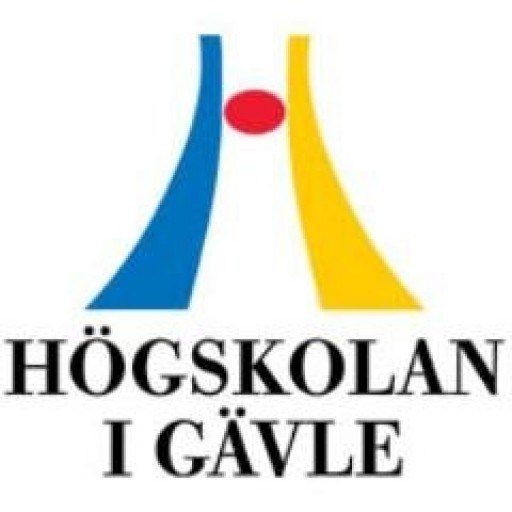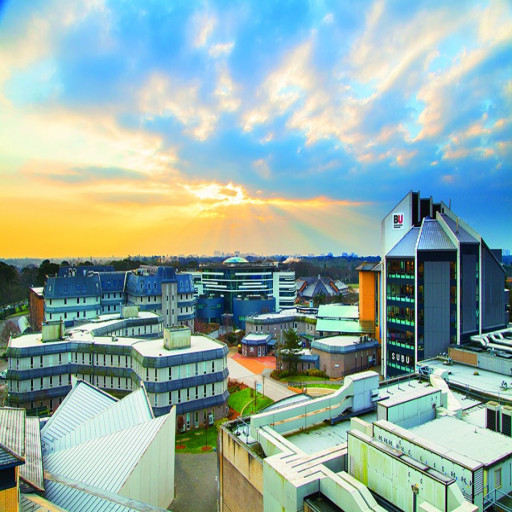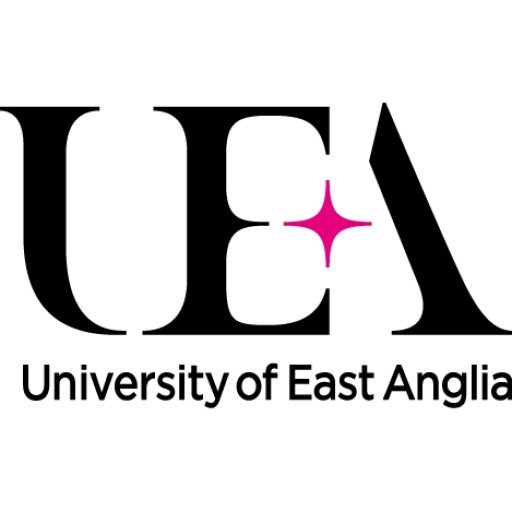Photos of university / #mitthig
The Bachelor's Programme in Geomatics at the University of Gävle is a comprehensive and interdisciplinary education designed to prepare students for a dynamic and rapidly evolving field. This program focuses on the collection, analysis, management, and visualization of spatial and geographic data. Throughout the curriculum, students acquire a solid foundation in cartography, GIS (Geographic Information Systems), surveying, remote sensing, and geospatial data analysis, equipping them with the technical skills needed to solve complex spatial problems across various sectors.
The program emphasizes both theoretical understanding and practical application, ensuring graduates are well-prepared for careers in urban planning, environmental management, infrastructure development, and spatial data management. Students will learn to use industry-standard tools and software, such as ArcGIS, QGIS, and GPS technology, while also developing critical skills in data interpretation, spatial data modeling, and digital mapping. The coursework includes projects, fieldwork, and collaborations with public and private organizations, providing real-world experience and fostering professional networks.
A key component of the program is its focus on sustainable development and ethical considerations related to geospatial data. Students are encouraged to think critically about the societal impacts of their work and to contribute to sustainable solutions in land use, resource management, and environmental protection. The program also offers opportunities for international exchange and internships, allowing students to gain global perspectives and practical experience outside the classroom.
Graduates of the Geomatics programme will be equipped for diverse career paths, including roles in municipal planning, environmental monitoring, land management, and geospatial consultancy. They will also have the necessary skills to pursue further studies or research in advanced geospatial subjects. Overall, the programme aims to produce highly competent, innovative, and socially responsible professionals capable of addressing the spatial challenges of today and tomorrow.
The Bachelor's Programme in Geomatics at the University of Gävle provides students with a comprehensive education in the field of spatial data collection, analysis, and management. The program is designed to equip students with the necessary skills to address complex geographical and infrastructural challenges through advanced geospatial techniques. Throughout the three-year course, students will learn about geographic information systems (GIS), remote sensing, cartography, surveying, and spatial data analysis, preparing them for a variety of careers within government agencies, private companies, and research institutions. The curriculum combines theoretical knowledge with practical applications, ensuring students gain hands-on experience with the latest geospatial technologies and software. In addition to core subjects, students will undertake projects that simulate real-world scenarios, fostering problem-solving and teamwork skills. The programme also emphasizes sustainable development and environmental considerations, highlighting the importance of responsible data management and ethical geospatial practices. Students will have access to state-of-the-art laboratories and fieldwork opportunities, enabling them to develop competencies in surveying and mapping in diverse environments. Upon graduation, students will be well-prepared to work as GIS specialists, geospatial analysts, cartographers, or surveying engineers. The programme aims to provide a strong foundation in both theoretical and practical aspects of Geomatics, empowering graduates to contribute effectively to urban planning, natural resource management, infrastructure development, and environmental monitoring. The international orientation of the programme allows students to develop a global perspective on geomatics issues, making them valuable assets in an increasingly interconnected world. Enrolling in the Geomatics programme at the University of Gävle offers a pathway to a dynamic and evolving field with ample employment opportunities and the potential for continued academic development through postgraduate studies.
Program Requirements for Bachelor’s Degree in Geomatics at the University of Gävle:
Admission to the Bachelor's program in Geomatics requires applicants to meet certain academic prerequisites. Prospective students must have completed upper secondary education with a focus on science subjects, including Mathematics and Physics, to ensure they possess the foundational knowledge necessary for rigorous studies in geomatics. Additionally, applicants are usually required to demonstrate proficiency in English, typically through standardized tests such as IELTS or TOEFL, to ensure they can engage fully with course materials and participate in class discussions.
Applicants should submit their completed application form along with academic transcripts, proof of English language proficiency, and any other documents specified by the university admissions office within the designated application period. The university may also conduct interviews or assessments to evaluate the applicants’ motivation and suitability for the program.
Once admitted, students are expected to participate actively in both theoretical coursework and practical fieldwork. The curriculum emphasizes skills in Geographic Information Systems (GIS), remote sensing, cartography, spatial data analysis, and surveying techniques. Meanwhile, students are encouraged to develop competencies in data collection, processing, and presentation, preparing them for careers in urban planning, environmental monitoring, infrastructure development, or geospatial analysis.
Students are also expected to complete a series of project-based assignments and a final thesis, demonstrating their ability to apply learned skills to real-world problems. Collaboration with industry partners may be part of the program, offering internships and practical experience that are crucial for employment after graduation.
Throughout their studies, students should also familiarize themselves with relevant software tools used in Geomatics, such as ArcGIS, QGIS, and AutoCAD. The program promotes interdisciplinary understanding, integrating principles of geology, environmental science, and computer science to provide a comprehensive education.
Graduates of the program will receive a Bachelor's degree in Geomatics, qualifying them for professional roles in mapping, land surveying, geospatial analysis, and environmental management. They will also be prepared to undertake further studies at the postgraduate level if desired, contributing to innovations and sustainable development in their respective fields.
The financing of the Geomatics program at the University of Gävle is primarily composed of tuition fees for international students and government funding for domestic students. International students are required to pay tuition fees, which vary depending on the level of study and the specific course offerings, with master's programs typically costing around SEK 125,000 to SEK 150,000 per academic year. These fees cover enrollment, access to university facilities, and certain academic resources, but additional costs such as housing, study materials, and living expenses are borne by students themselves. Swedish and other European Union (EU) students enrolled in the program do not pay tuition fees due to Swedish government policies that provide free higher education for EU/EEA citizens. Domestic students, primarily Swedish nationals, benefit from government-funded education through the Swedish Higher Education Act. Their tuition is covered by public funding, although they may need to cover living expenses, study materials, and other associated costs.
In addition to tuition fees, students may have access to various scholarship opportunities designed to support their studies financially. The university offers scholarships for international students based on academic merit, which can partially or fully cover tuition fees. These scholarships often require application and are competitive. Moreover, students can explore external scholarship programs offered by Swedish government agencies, private foundations, and international organizations, which are aimed at promoting global academic exchange and supporting students financially.
Students enrolled in the program might also access student loans and grants available from the Swedish State Student Aid Agency (CSN). International students from outside the EU/EEA can sometimes qualify for these financial aid options, contingent on meeting certain eligibility criteria and the duration of their stay. These financial aids are designed to ease the financial burden of studying abroad, enabling students to focus on their academic pursuits.
Furthermore, some students finance their studies through part-time employment, internships, or research assistant roles offered by the university or local businesses. The university’s location in Gävle offers opportunities for part-time work in various sectors, which can supplement student income and provide relevant work experience within the field of geospatial data management and surveying.
Overall, the financing structure of the Geomatics program at the University of Gävle combines government funding, tuition fees, scholarships, and personal funds or employment. International students are encouraged to research and apply for scholarships and financial aid programs early to ensure comprehensive financial planning. domestic students benefit from Swedish government funding, making the cost of education more affordable in comparison to many other countries. The university also provides financial guidance and counseling to assist students in planning their finances effectively throughout their studies.
The Bachelor’s degree programme in Geomatics at the University of Gävle offers students comprehensive education and training in the field of geospatial science, focusing on the collection, analysis, management, and presentation of spatial data. This programme is designed to equip students with both theoretical knowledge and practical skills required for careers in surveying, mapping, geographic information systems (GIS), remote sensing, and environmental monitoring. Throughout the course, students learn about advanced measurement techniques, cartography, spatial data integration, and GIS software, preparing them to address real-world challenges in urban planning, infrastructure development, environmental protection, and resource management. The programme emphasizes project-based learning, enabling students to work on practical projects that reflect industry standards and demands. Furthermore, students have the opportunity to develop competencies in data analysis, spatial data modeling, and the use of cutting-edge technology such as drone surveying and satellite imagery. The curriculum typically includes courses on GIS development, surveying methods, geodesy, geospatial data handling, and legal aspects related to land and property. The degree also promotes interdisciplinary collaboration, encouraging students to work with other fields such as architecture, engineering, and environmental sciences. Upon graduation, students are well-prepared for employment in public agencies, consulting companies, and private firms involved in land surveying, environmental assessment, urban planning, and infrastructure projects. The programme also offers a pathway for further studies, including master's level education in geomatics or related disciplines. The University of Gävle supports students with modern facilities, laboratories, and access to various GIS tools and software, ensuring that practical skills are developed alongside theoretical understanding. The degree typically spans three years and is conducted in English, making it accessible to international students. Graduates of the programme will possess the knowledge and skills necessary to contribute to sustainable development and spatial planning efforts, leveraging innovative technologies to improve the management of our environment and infrastructure.







